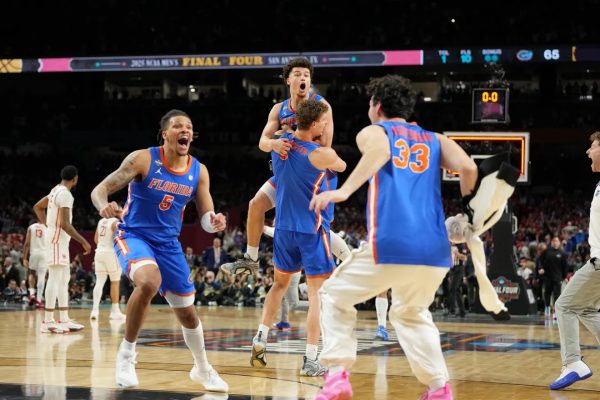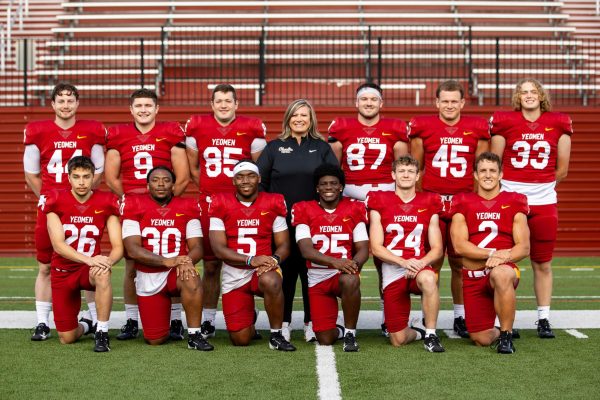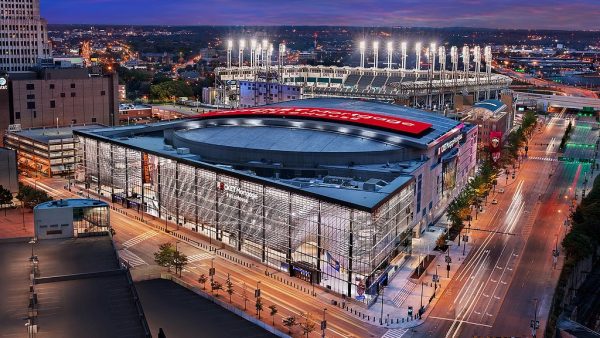OHS Should Plan to Build Home Stadium Amid Broader Infrastructural Developments
In 2021, I reported on the lack of an outdoor stadium for Oberlin High School’s athletics teams. A year and a half later, there are still no plans to build one. Given that Oberlin City Schools are working on amassing funds for a 6–12 school, it’s understandable if a stadium is not necessarily at the top of their list of priorities. Still, I think it’s important to detail why having a home stadium is important so it doesn’t get forgotten in the process of Oberlin Schools’ updating of their facilities.
As a high school senior in October 2018, I played my final soccer game at Oberlin Phoenix Field — a small stadium that had been home to Oberlin High School’s football and soccer teams for decades. Not only was that my last year as a high school athlete, but the stadium’s last year in operation as well. In September 2019, it was leveled to make way for the construction of Oberlin Elementary School.
Since then, the sports teams that played there — football, boys’ soccer, and girls’ soccer — had to find new places to play. The football team has played at the College’s Knowlton Athletics Complex at a cost of $1,000 per game. It’s not a bad deal, and the players get to play at a top-of-the-line college facility built not even a decade ago. The soccer teams, on the other hand however, have been dealt a bad hand.
Next year, OHS will have a group of senior soccer players who have never played a game at a real home stadium of their own. Since the 2020 season, both boys’ and girls’ teams have played all their home games on a low-quality patch of grass with removable bleachers at the very back of the OHS campus. It’s the same spot we used as a practice field during my playing days. Even for practice, it was a very poor surface that had weeds and crabgrass growing all over the uneven ground.
I know that building a stadium that would likely cost upwards of $1 million in tax dollars would present many obstacles. Still, it would make a major difference in how high schoolers experience sports.
Some of the best experiences of my teen years were playing night games under the lights at the old stadium — something OHS soccer players don’t get to do with the current situation. Part of the fun of high school sports is that it can create an atmosphere that goes beyond the actual competition. Although OHS only has roughly 350 students and competes in the smaller divisions within Ohio high school sports, those night games at a real physical stadium encouraged adrenaline, excitement, and passion from anyone that played under the lights.
Having a home stadium isn’t important only because it creates a thrilling atmosphere for the athletes. It also serves as a spot for students to hang out and watch their classmates try to accomplish something. The old stadium was right next to the school’s parking lot, and students involved in other school activities on weeknights would sometimes come over and catch the end of our games.
Even though the football team plays at the College’s facility, the fact that there’s no stadium at the actual high school affects how football games serve students socially as well. In Ohio, Friday Night Lights is almost as much of a thing as it is in Texas. Even in a small town like Oberlin, students and townspeople make an effort to go to the football games, whether as something social to do with friends or to take advantage of $1 popcorn.
The reason I worry that the issue of a stadium will go by the wayside is because of how athletics facilities have been disregarded historically.
While I valued my experiences at the old Oberlin Phoenix Stadium, it wasn’t in a great state in its final years. It hadn’t been updated recently, and the upkeep of the field was not always the best. Other outdoor OHS teams have also had issues with their fields.
Since Oberlin Schools’ construction projects began, the baseball and softball teams have relocated to the Oberlin Recreation Complex, which is run by the City of Oberlin. For the teams, it’s actually a huge upgrade. For years, these teams each had a field at the school that was often in a brutal state. The outfield of the old baseball field was often unkempt with high grass, and the infield was not always raked in time for games. There were instances when players had to help prepare the field themselves. The softball field was also often in poor condition and didn’t even have a permanent home run fence.
I understand that many of these issues have to do with lack of resources. I went to Oberlin schools from kindergarten through high school and saw every day that it wasn’t just sports that were underfunded.
If you don’t have the money to renovate a field, then you can’t renovate it. If you don’t have the money to take care of a grass surface, then you can’t take care of it. However, providing sports teams with the bare minimum is going to have negative consequences over time. Every other school in OHS’s athletic conference has a football stadium, and some have soccer-specific stadiums as well. You risk young athletes going to other schools if your facilities are the worst in the area.
I’m not blaming administrators or the school board for this issue. The schools are still trying to amass funds through current tax bills to build the new 6–12 school facility, and I understand that comes first.
I just think we need to keep in mind that sports facilities — and most importantly, an outdoor multipurpose stadium — make a difference. It made a difference to me and to OHS alumni I talked to on the record for my 2021 article. Right now, OHS athletes are going through all four years without playing a home game in a stadium or on the school’s campus, and that can’t be permanent. As Oberlin community members, voters, and taxpayers, all I can ask is that you consider how you can help prevent that for the future.





